Epaulettes. They’re a thing you put on your shoulders when in a uniform that makes your shoulders look wider. They have a fringe, and a flat bit, and lots of details if you’re doing it right. They attach to the uniform in complex, mind bending, possibly even quantum-entangled ways. Their presence, or absence, makes and breaks the historical accuracy of a Guards Army. They are, and apparently will continue to be the bane of my existence as a new Napoleonics player.
Over the last couple of weeks (Part 1 of the Road to Austerlitz was pre-Christmas in my time), I have painted about 150 Epaulettes, in addition to tassles, pom-poms, belts, other kinds of belts, and boxes with an N on them. Napoleonics are fancier, and more complicated, than it is possible to imagine. Getting these done, readers, has been a whole big thing.
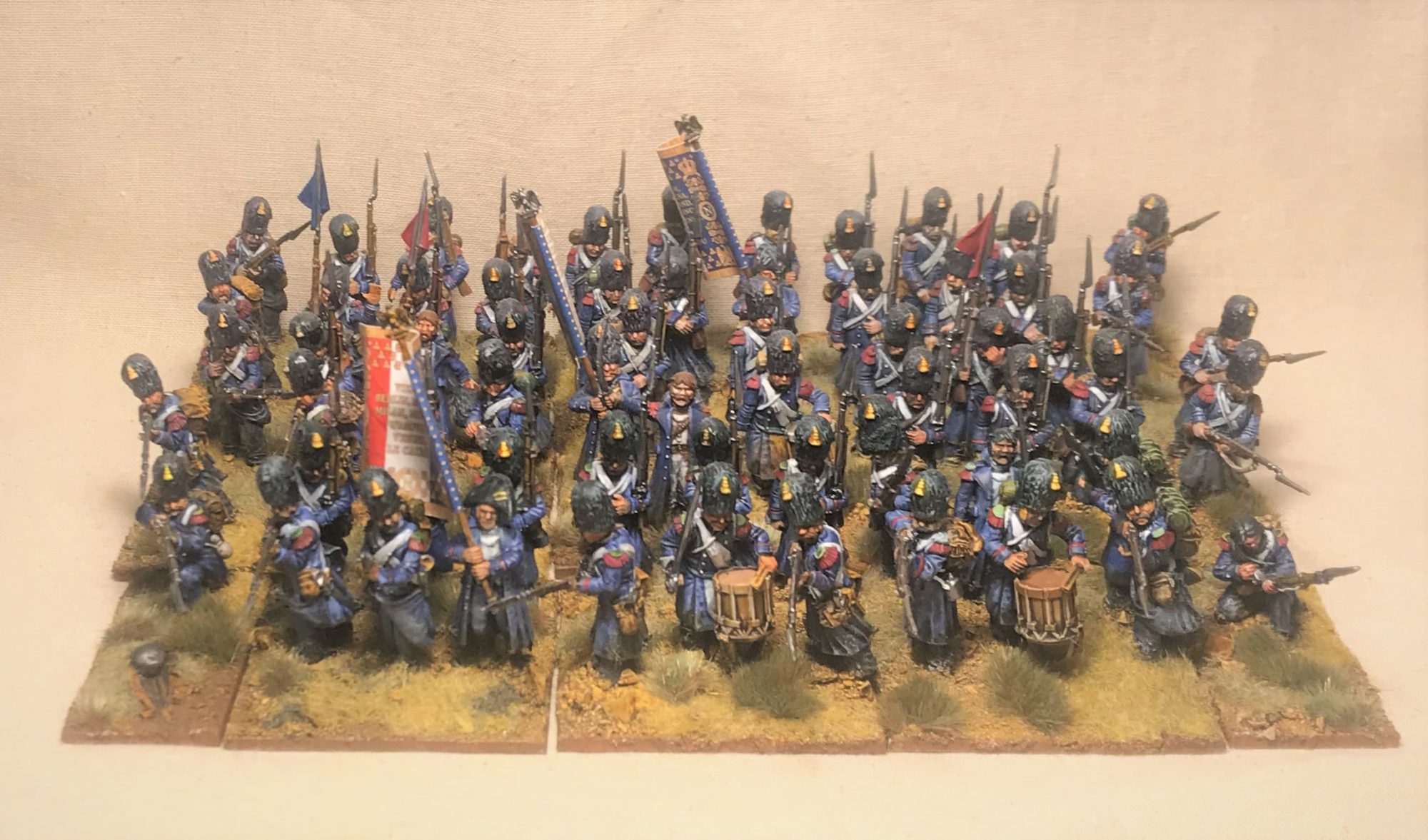
Please note, for your consideration and my massive relief, 63 Chasseurs a Pied of the Imperial Guard, mostly – after taking advice from the comments of Part 1 – with the correct colour of epaulette. After the initial six painted in a flurry of excitement, I settled down into a rhythm and got them painted up quickly and to a reasonable degree of accuracy. These were mostly painted with Citadel Contrasts, hit with a very watered down Army Painter Dark Tone wash and then splashed with brown wash, brutally battered with dark and light mud tone drybrushing and liberally treated to the very last of my Dullcote matte.
They aren’t the prettiest, and they definitely show the speed painting and assembly, but I think they’ve come out fairly well. Certainly from tabletop distance they look like they once were – a mass of absolute hard fighting dirty bastards, exhausted after a day’s fighting, or possibly a day’s standing around waiting to fight while the poor bloody infantry of the line regiments fought their way to mastery of Europe.
Since they are speedpainted though you’ll have to trust me that I can paint detail, and here’s an agonised face to attempt to prove it:
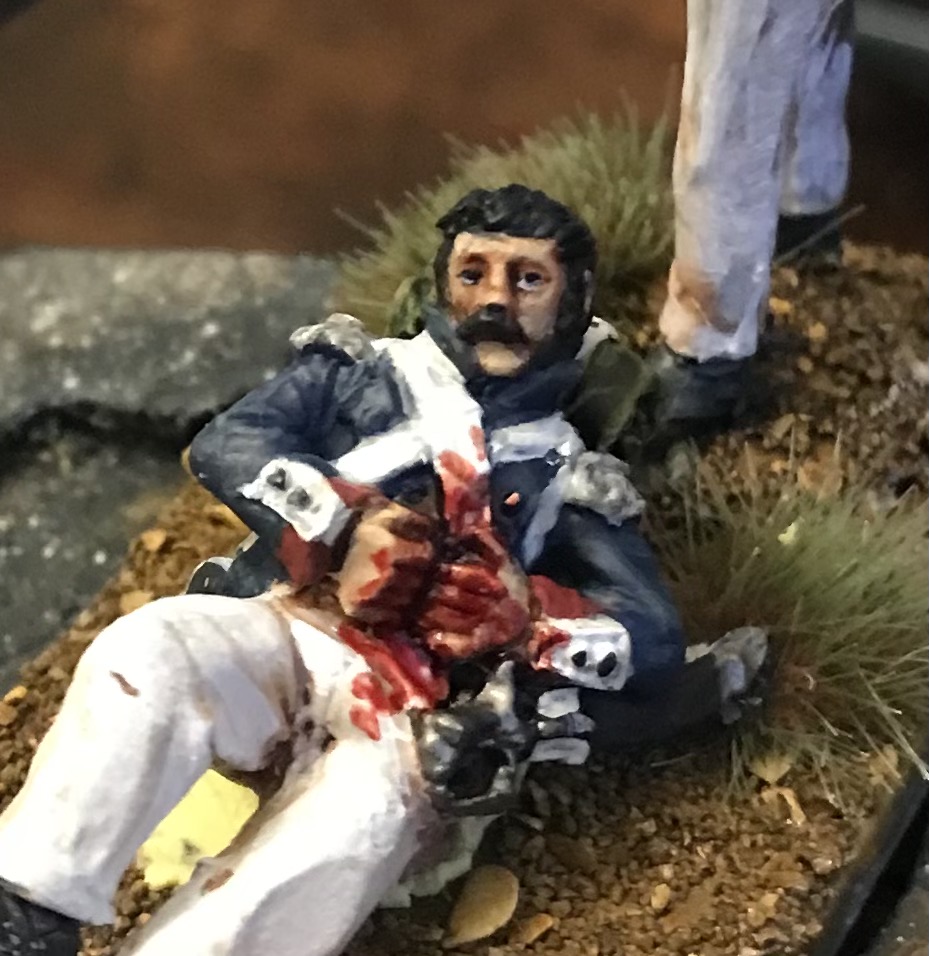
Once I’d based and painted them though I actually had to stop and think about what this unit is going to be and how many units it actually is. I’d assembled three Eagle carrying flagpole-guys (if there’s a proper word for this I’m not sure what it is yet, aside from standard bearer), three drummers including one using his hands to give a sweet bongo vibe to the marching, and six bases of two. I gave the flag guys the nicest looking flags in the pack “1812 flags issued 1813”. Seems like a shoe-in for three units: 1st, 2nd and 3rd Chasseurs a pied of the Old Guard. Then, I learnt an important lesson about research.
“Take time to Deliberate, but when the time comes….”
Actually do some research if you want a researched army. That’s it, that’s the lesson.
Most of my research so far has been learning about the general situation, the what the hell was the Napoleonic period about anyway level of research. I managed to mainline a 1960s history of France after Louis XIV, noted large-genital-energy King, which has taught me three main things: the author hates Napoleon, I think largely because he was Corsican, French History is much more confusing than British History, and that I want my Army to be from 1813.
1813 gives me a couple of pointers to shape the force, as well as an Order of Battle for the Old Guard to build to and muck about with, but more importantly it gives me more theme. If, like me a couple of weeks ago, you don’t have even the vaguest grasp of Napoleonic history, let me break it down into three simple phases:
1793-1811: Napoleon hands out vicious diplomatic, military, organisation and stylistic beatdowns of everyone in Europe
1812-1814: Napoleon starts a land war in Asia with predictable results, then rallies broken armies and gets permanently beaten, once and for all
1815: SURPRISE, MON CHERI, he’s back (don’t spoil me on the end)
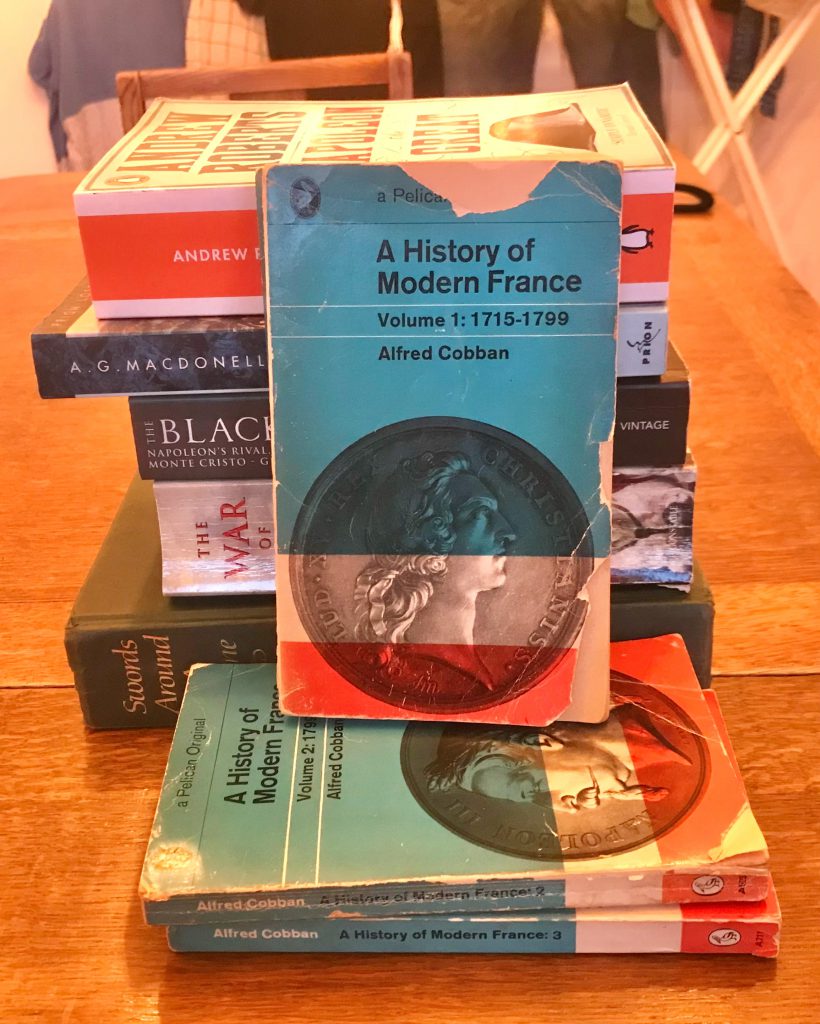
1813 is a real inflection point in the history of the period. Napoleon has reached the high point – and reached far, far beyond it. The army that marched into Russia is one of those “best ever” armies that strange figures in dark rooms talk about in hushed tones – the Roman Legions under Julius Caesar, the Abbasids under Saladin, the Macedonians under Alexander, the Grande Armee under Napoleon. But in 1813, most of them are dead, frozen on the march back from Moscow. The rest are reconstituted into new units, with new uniforms and new flags. There’s hope, but also loss and sorrow – the waning ebb of an empire, the hubris of (a) man. Exactly my kind of project.
Thinking about my lesson though – there were only two regiments of Chasseurs a pied in 1813. I can either separate them out into two – really just need to take a single flag bearer off and then separate them out between the other two, or I can rip off their heads and replace them with Grenadier heads, or – and here is definitely my secret in historicals wargaming – I can not bother to do any of it and just have three regiments.
Accuracy in historicals only really matters as much as you think it does, and especially seeing as the difference between Chasseurs (literally just slightly smaller Old Guard) and Grenadiers (slightly larger Old Guard) on the tabletop is nonexistent, I’ll pretty much do as I fancy with them. There’s already some historicals heresy in there – the skirmishing figures are mainly Perry Voltiguers with a headswap so the uniform isn’t quite right, and one of the headswaps was for a spare female head. This is something I do at least once in all of my historicals projects – a micro acknowledgement that there were plenty of women in uniform in the Napoleonic armies and for every one known to history, there would have been many, many others.
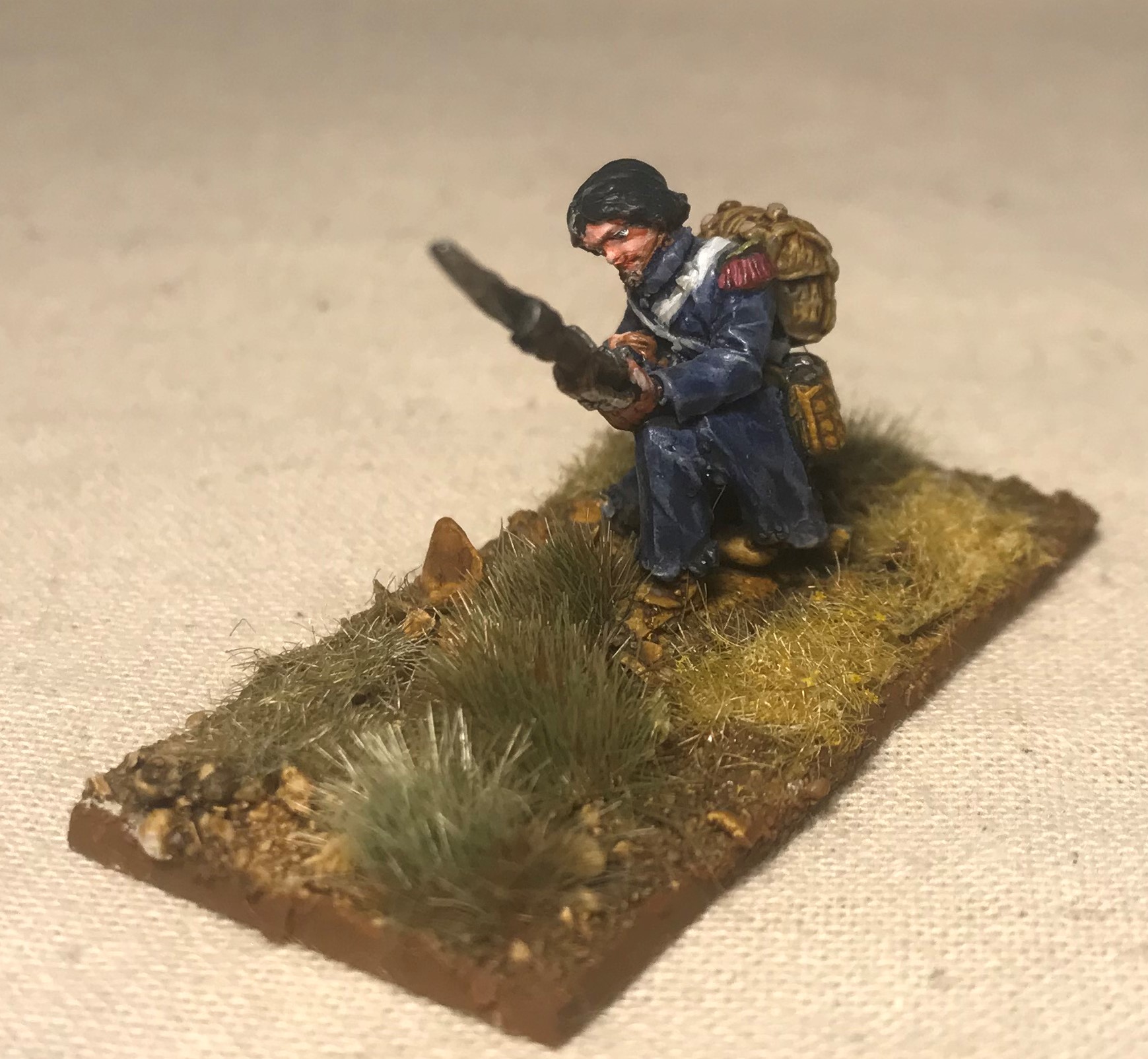
“A Soldier Will Fight Long and Hard for a coloured Ribbon”
After getting all the paint on, I actually went out and had a game with the Old Guard – taking the recommendation of the rest of the Goonhammer Historicals team and playing some Sharp Practice at down at the gaming club. Sharp Practice is designed and named from the ground up for Napoleonics and let me tell you: it fucking slaps. I went in armed with only the knowledge gained from the goonhammer articles on moving and shooting, and came out having already bought the rules and cards, with grand plans for my own deployment points, smoke markers, civilian advisors etc etc etc. Thanks to Muggins and Ilor for the primers, all I can add is:
Sharp Practice: PLAY IT, ITS GOOD
Tactically, I am absolutely terrible though, so I threw my Old Guard column into the teeth of a British line firing three rounds a minute. In short order they all got thrown back in disarray and killed, despite the actions of officers crying in frustration at the last rallying point. I believe this means I won the full moral victory: I pulled a complete Napoleon.
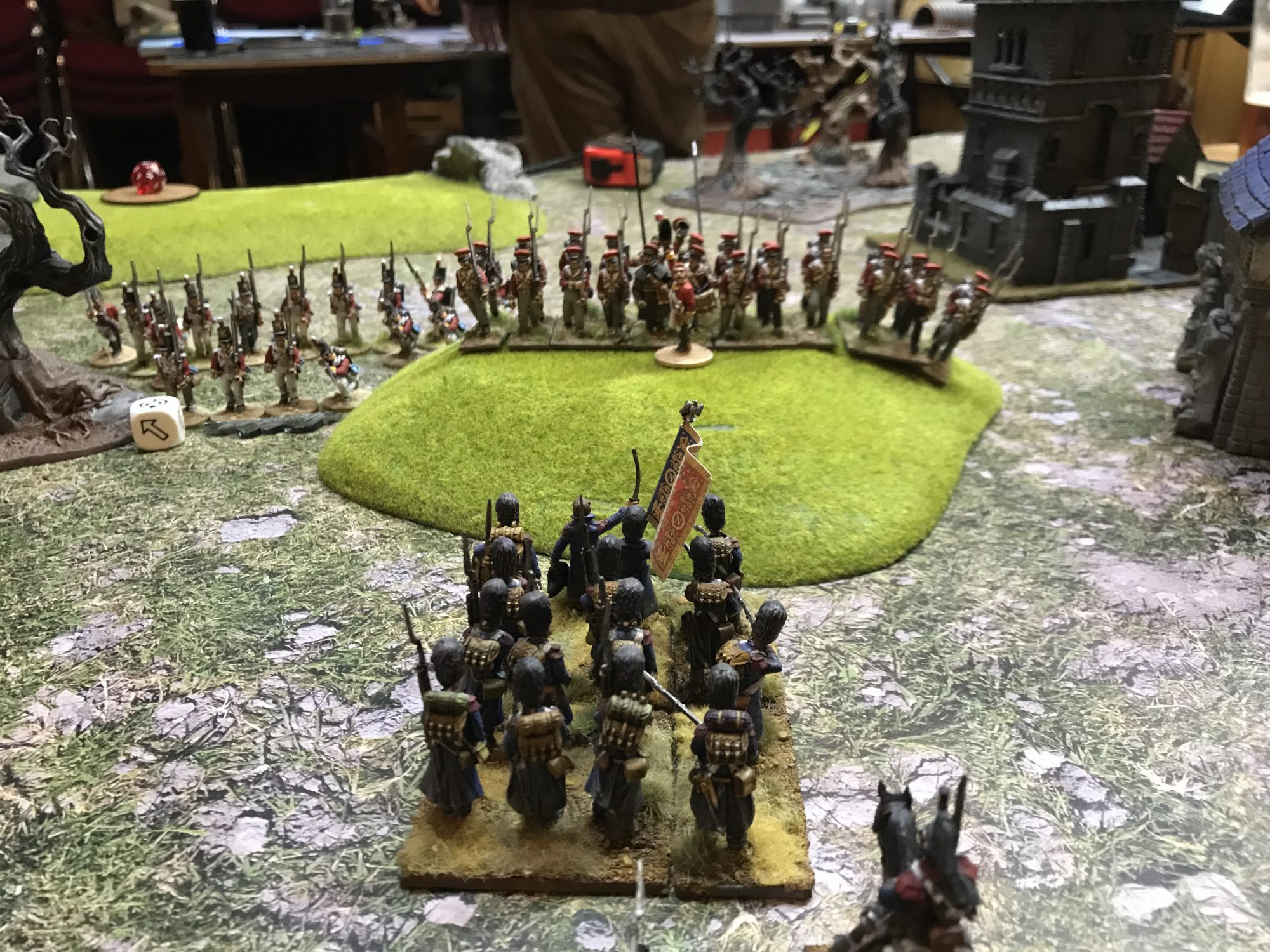
While the men were dying all around my officers, and even the brave stand of the last twelve men couldn’t hold the forces of perfidious Albion, I was planning what I need next. Cavalry. Skirmishers. Medics. A working knowledge of what a Chasseur is, what a Grenadier is and, most importantly, more of all of them. Thanks to some frantic research concluded by the skin of my teeth before writing this article, I know where I can fit these into the Imperial Guard theme, and now I have plans as intricate as Napoleon’s – “get more guys, beat up the Holy Roman Empire, profit”.
Next time:
Actually working out how the Guard worked. Young guard! Middle guard! Horsey guard! Cannon guard! Painting Uniforms without the box art as a reference! Who knows – I might even get better at Sharp Practice, though saying that is as hubristic as marching off to Moscow on foot in June. Toujours la tentative!
Have any questions or feedback? Drop us a note in the comments below or email us at contact@goonhammer.com.


